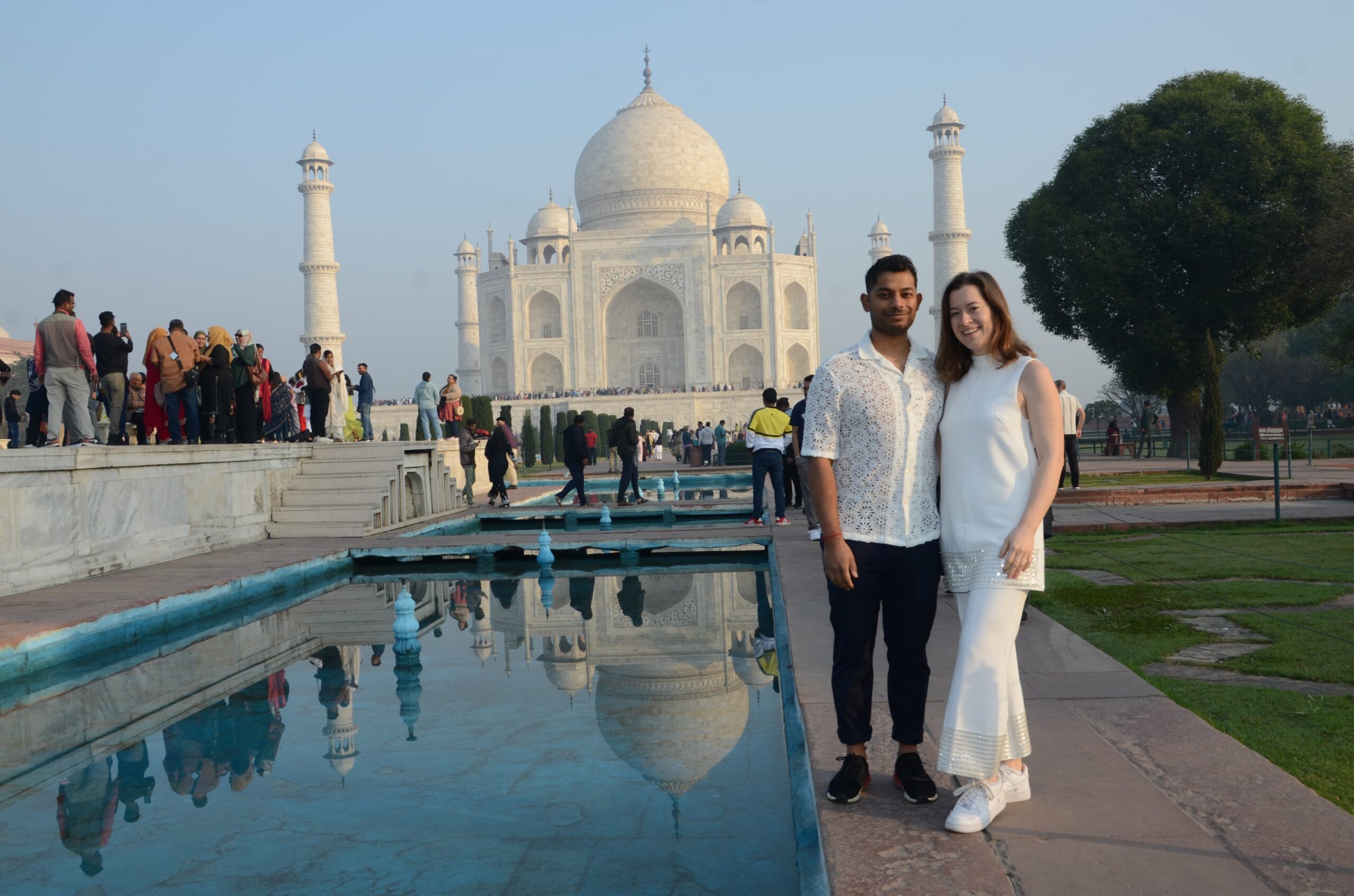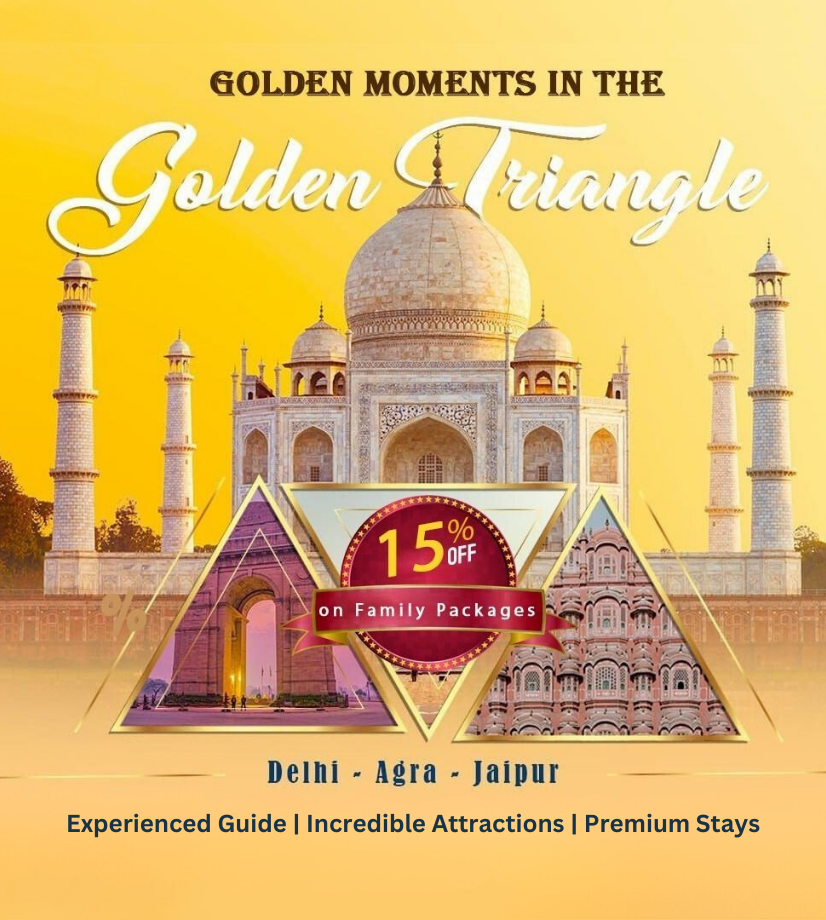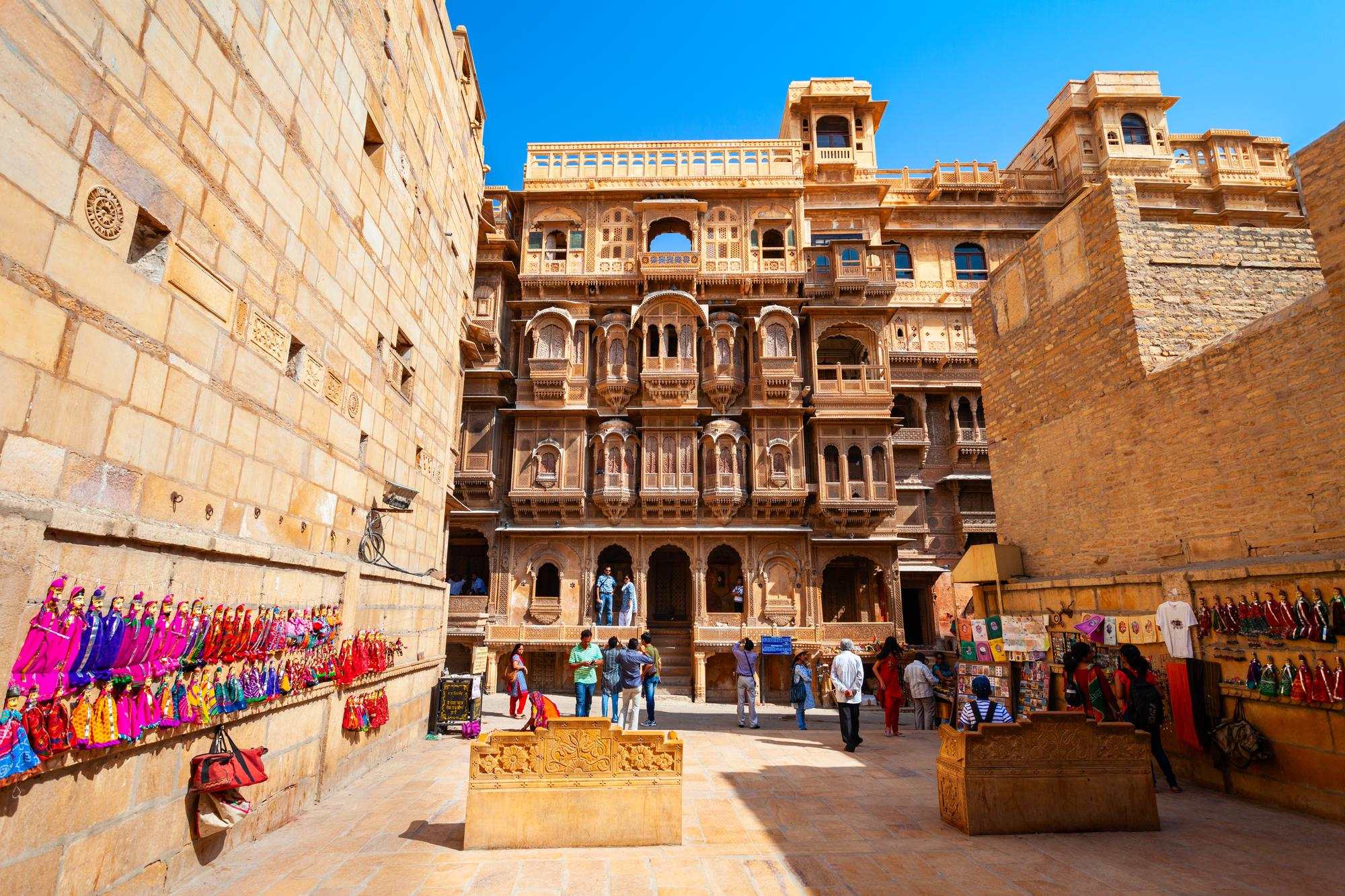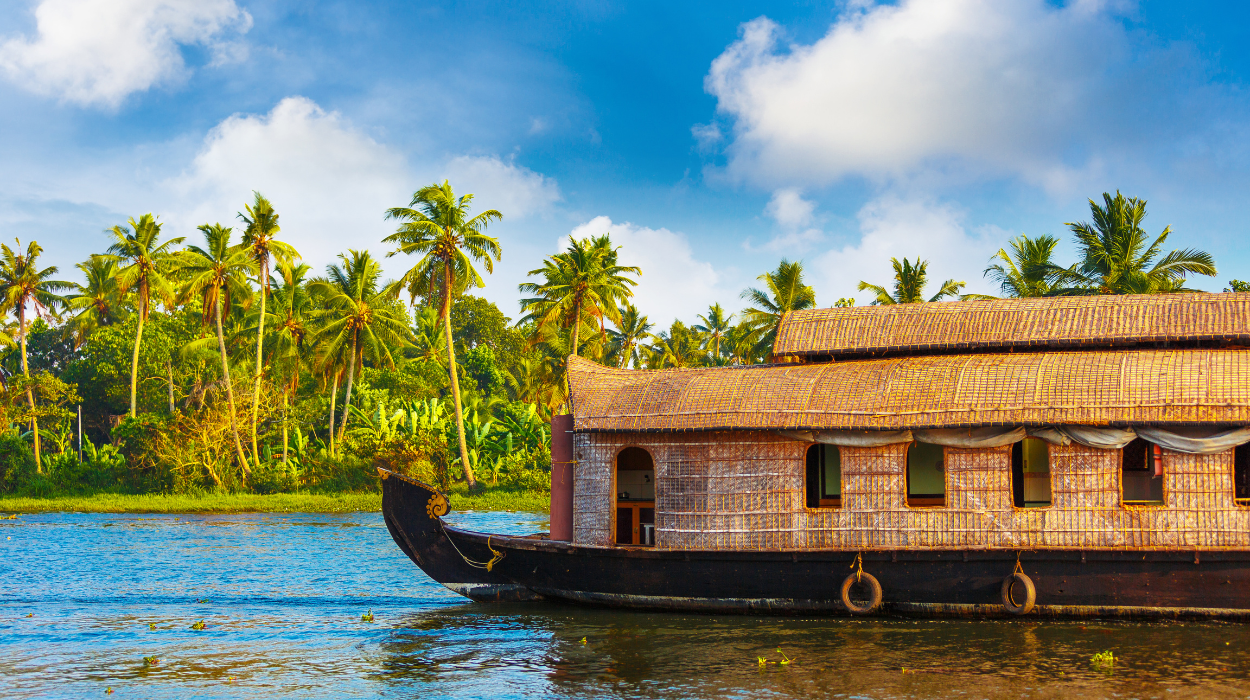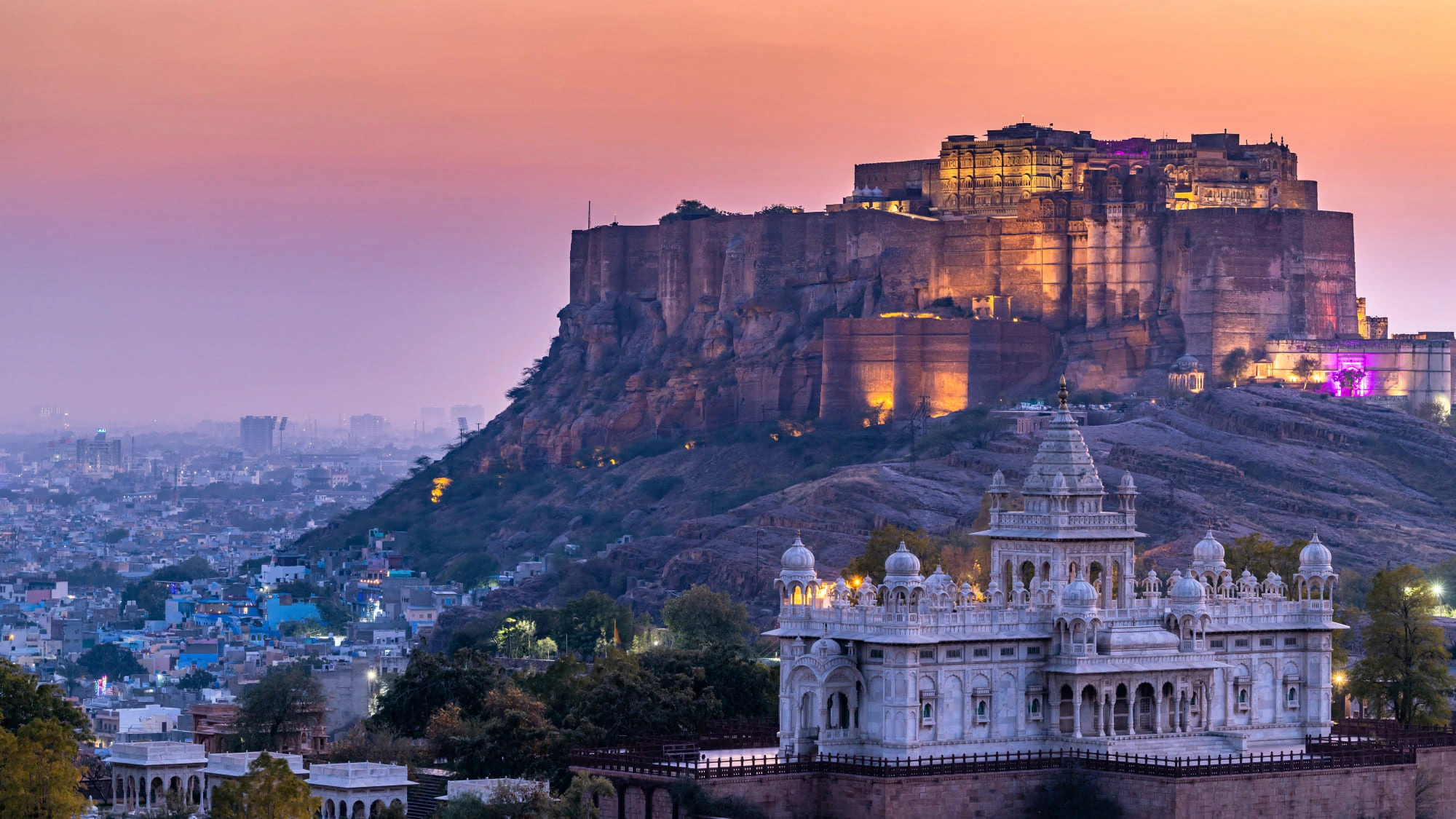Introduction & Top Questions About Taj Mahal
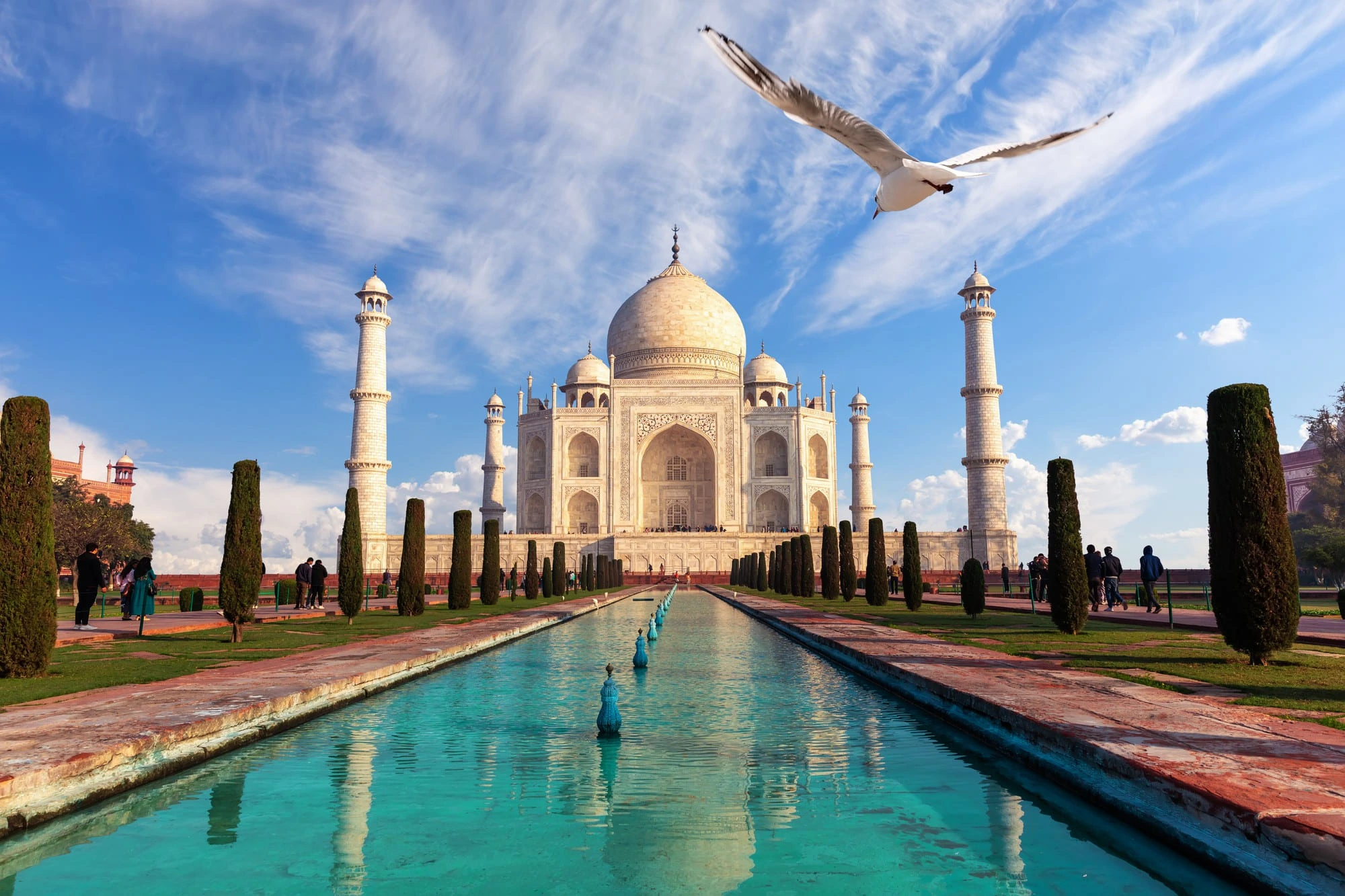
Standing gracefully on the banks of the Yamuna River in Agra, the Taj Mahal is more than just a monument—it’s a timeless symbol of love, artistry, and cultural pride. Its pristine white marble façade, changing hues with the daylight, has fascinated travelers, historians, and poets for centuries.
Recognized as a UNESCO World Heritage Site since 1983, the Taj Mahal is celebrated globally as one of the finest masterpieces of Mughal architecture and a shining example of human creativity and craftsmanship. Millions of visitors from around the world arrive each year to witness its beauty, making it one of the most visited landmarks in India.
If you’re wondering:
- Where is the Taj Mahal located? It stands in Agra, in the northern state of Uttar Pradesh, India.
- Who built it? It was commissioned by Mughal Emperor Shah Jahan in memory of his beloved wife, Mumtaz Mahal.
- When was it built? Construction began in 1632 and took around 22 years to complete.
- Why is it so famous? Beyond its breathtaking design, the Taj Mahal embodies a love story immortalized in stone, making it both an architectural marvel and an emotional experience for visitors.
The Story Behind the Taj Mahal
Taj Mahal History – From Concept to Completion
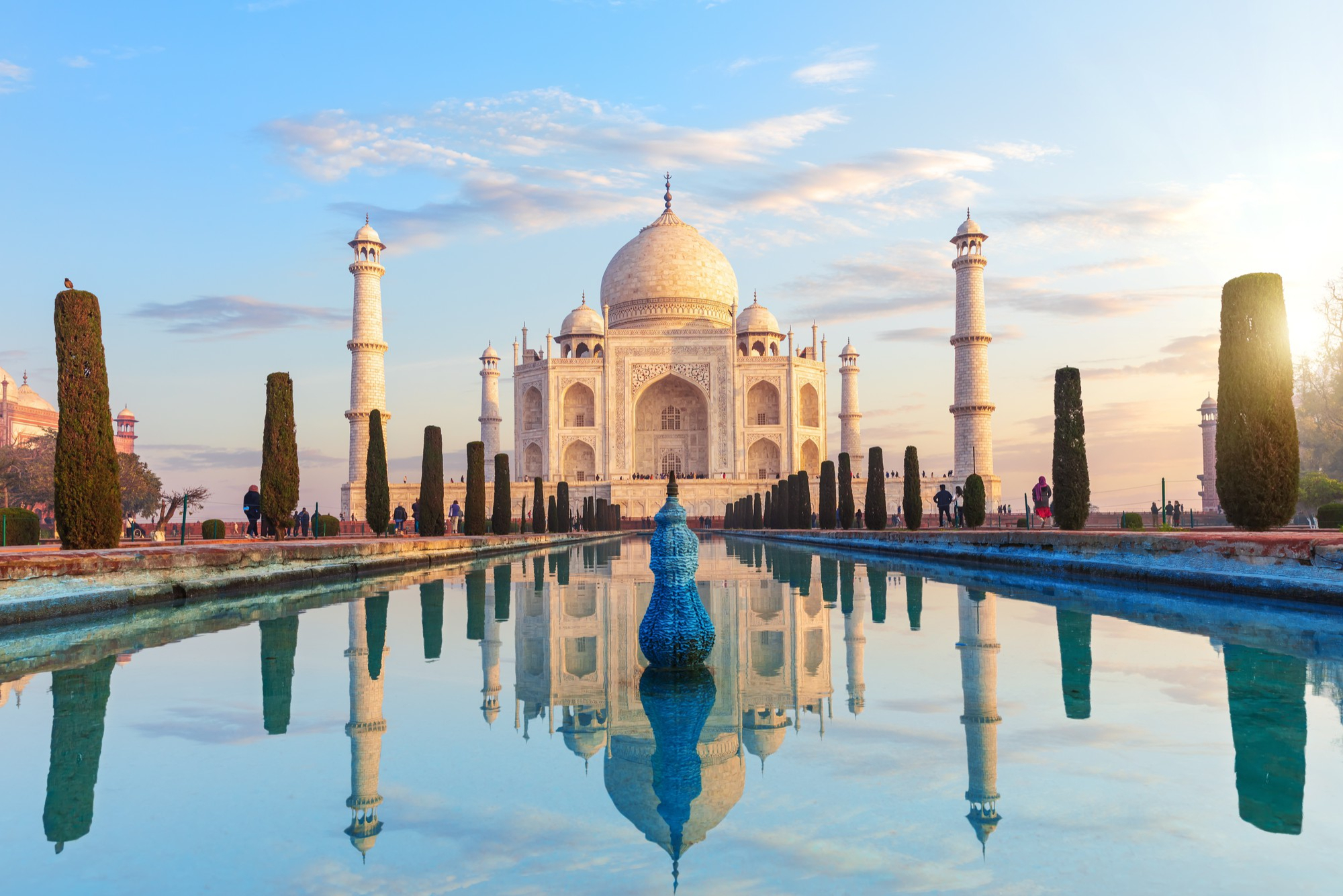
The vision for the Taj Mahal was born out of grief but executed with extraordinary ambition. In 1631, Mughal Emperor Shah Jahan faced the devastating loss of his wife, Mumtaz Mahal, during the birth of their 14th child. Heartbroken, the emperor vowed to create a monument unlike any the world had ever seen—a tribute to her memory and their enduring love.
Construction began in 1632 during the height of the Mughal Empire’s power. Over 20,000 artisans, laborers, calligraphers, and craftsmen were brought in from across India, Persia, and the Ottoman Empire. The project took approximately 22 years, with the main mausoleum completed by 1648 and surrounding structures and gardens finalized by 1653.
When Was the Taj Mahal Built?
The Taj Mahal’s construction spanned the years 1632–1653, under Shah Jahan’s rule (1628–1658). This period was considered the golden age of Mughal architecture, blending Islamic, Persian, Ottoman, and Indian design elements. Politically, it was a time of stability and wealth in the empire, which allowed for the immense resources needed for such a grand undertaking.
Who Made the Taj Mahal?
While Shah Jahan was the visionary behind the Taj Mahal, credit for its design goes to a team of brilliant minds, including chief architect Ustad Ahmad Lahauri and master artisans from across Asia. Mumtaz Mahal, the inspiration for the monument, was more than just the emperor’s wife—she was his trusted advisor and constant companion. Together, their relationship formed the emotional foundation for this timeless masterpiece.
The Taj Mahal Story – A Love Etched in Stone
The Taj Mahal is often called a “love letter in marble.” Mumtaz Mahal passed away at the age of 38, leaving Shah Jahan inconsolable. He poured his grief into this monument, ensuring every detail reflected beauty, harmony, and eternity. The perfectly symmetrical layout, the delicate floral carvings, and the gemstone inlays all serve as an eternal reminder of their love.
Who Invented the Taj Mahal?
The Taj Mahal wasn’t “invented” in the modern sense of the word—it was commissioned by Shah Jahan. Its creation was the result of collaboration among architects, engineers, and artisans who transformed his vision into reality. Rather than being a single person’s invention, it stands as a collective masterpiece shaped by cultural exchange, artistic genius, and imperial ambition.
Architecture and Design
The Taj Mahal architecture is a sublime fusion of Mughal style and Persian influences, resulting in one of the most iconic monuments in the world. Its harmonious proportions, intricate artistry, and spiritual symbolism make it a true architectural marvel.
Layout and Structural Plan
The complex follows a meticulously symmetrical layout. At its heart lies the grand mausoleum, flanked by a mosque to the west and a guesthouse to the east. The charbagh-style gardens, divided by water channels, symbolize the four rivers of paradise. Reflecting pools perfectly mirror the structure, enhancing its visual impact.
Materials Used to Build the Taj Mahal
The main structure is crafted from pure white Makrana marble, sourced from Rajasthan, inlaid with semi-precious stones like jade, jasper, lapis lazuli, and turquoise. This combination of materials creates a breathtaking play of light and shadow, changing hues with the time of day. For travelers seeking to witness such fine craftsmanship, a Classic Golden Triangle India Tour with Varanasi often includes a visit to this remarkable site.
Characteristics and Features of the Taj Mahal
The monument is celebrated for its flawless symmetry, four slender minarets that frame the mausoleum, and a massive central dome rising 73 meters high. Delicate calligraphy of Quranic verses adorns its entrance, while detailed floral motifs and geometric patterns enhance its elegance.
Symbolism in Design
Every element of the Taj Mahal carries meaning. The symmetrical layout reflects balance and harmony, the gardens represent paradise, and the marble’s purity symbolizes eternal love. Visitors can experience these symbolic details up close during a Same Day Guided Tajmahal Tour with Agra Fort and Baby Taj, making the experience both educational and unforgettable.
Significance of the Taj Mahal
Cultural and Historical Significance – Mughal Art & Heritage
The Taj Mahal is more than an architectural wonder—it’s the crown jewel of Mughal art and heritage. Built during the height of the Mughal Empire, it reflects a perfect blend of Indian, Persian, and Islamic design traditions. For travelers exploring India’s history through iconic landmarks, the Taj Mahal often forms a highlight of cultural itineraries, such as the 5 day golden triangle tour india, which covers Delhi, Agra, and Jaipur.
Outstanding Universal Value – A UNESCO Treasure
Recognized as a UNESCO World Heritage Site in 1983, the Taj Mahal holds outstanding universal value for its architectural harmony, artistic mastery, and cultural symbolism. Its perfectly proportioned structure, intricate marble inlay work, and integration with the Yamuna River landscape make it one of the world’s most celebrated monuments.
Criterion (i) – Masterpiece of Human Creative Genius
The Taj Mahal meets UNESCO’s Criterion (i), awarded to sites representing a masterpiece of human creative genius. Every element—from its calligraphy panels to its gemstone inlays—demonstrates unparalleled skill and vision. Much like the detailed carvings found in Rajasthan’s havelis, which you can explore on a 7 Days with Culture and Artistic Rajasthan Havelis Tour, the Taj Mahal reflects an era when art and architecture were at their peak.
Taj Mahal Important Points – Quick Reference
- Location: Agra, Uttar Pradesh, India.
- Commissioned by: Mughal Emperor Shah Jahan in memory of Mumtaz Mahal.
- Construction Period: 1632–1653.
- Material: White Makrana marble with precious stone inlays.
- Architectural Style: Mughal, with Persian and Islamic influences.
- UNESCO World Heritage Site: Listed in 1983.
- Symbolism: Eternal love, paradise imagery, and Mughal grandeur.
- Nearby Travel Tip: While in India, you can extend your trip to other cultural gems like the Thar Desert on a 3 Days Jaisalmer Rajasthan Tour Package.
Integrity, Authenticity & Preservation of the Taj Mahal
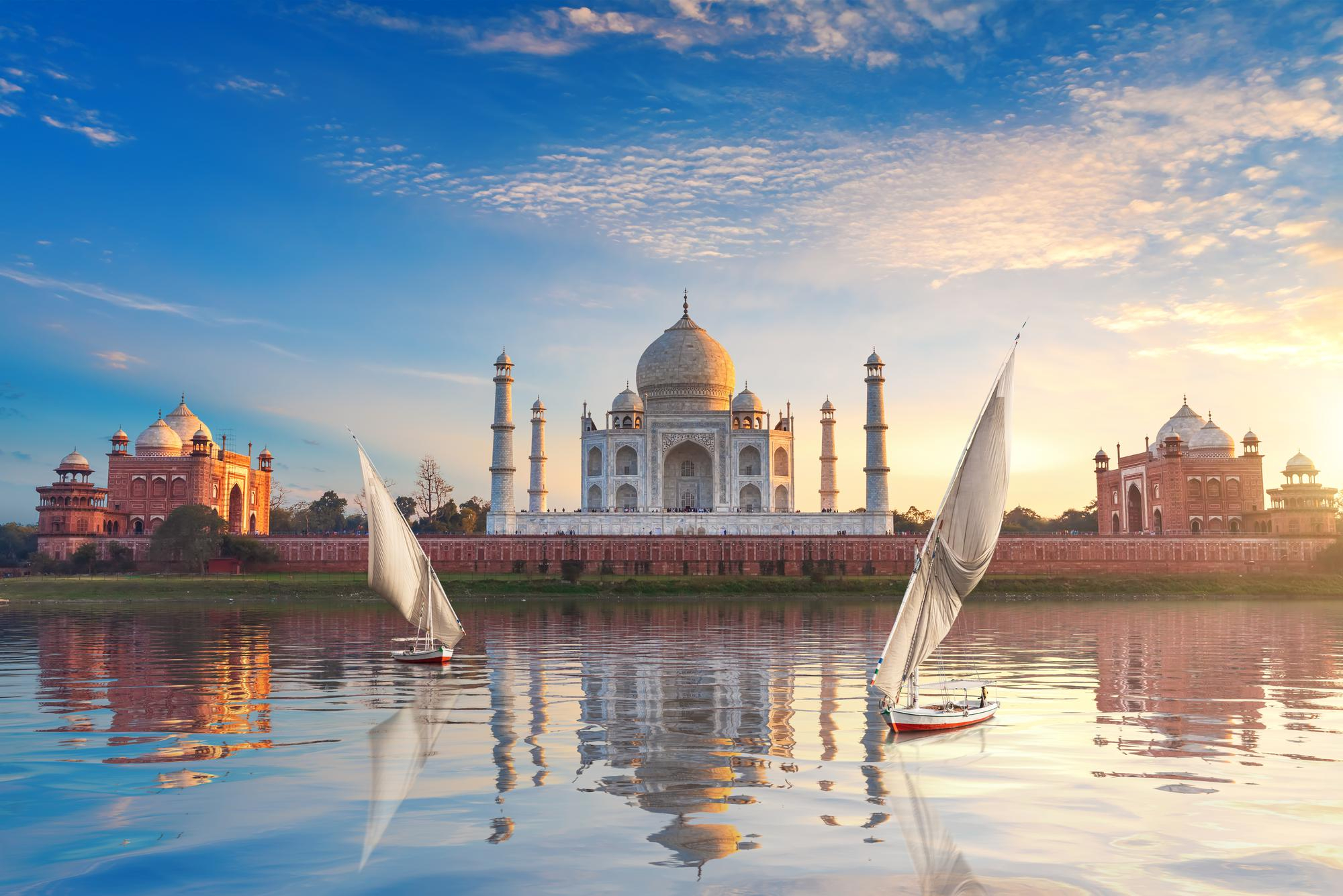
The Taj Mahal in Agra is not just a monument; it’s a living testament to Mughal craftsmanship and timeless beauty. Despite being over 350 years old, the Agra Taj Mahal has maintained its original charm, intricate detailing, and architectural balance, making it one of the most admired landmarks in the world.
How the Taj Mahal Maintains Its Original Form
One of the most fascinating features of the Taj Mahal is its flawless symmetry, pristine white marble, and delicate inlay work — all of which have been carefully preserved through the centuries. The Taj Mahal architecture blends Persian, Mughal, and Indian styles, and each preservation effort focuses on retaining these authentic design elements.
Conservation experts ensure that any restoration work uses materials identical to the originals. For example, when sections of the marble show signs of yellowing, a traditional clay cleaning process called multani mitti (Fuller’s Earth) is used, keeping the structure’s integrity intact.
Preservation Challenges
Like all heritage sites, the Taj Mahal faces threats from environmental changes, pollution, and the impact of millions of tourists each year. Industrial emissions and vehicle traffic near the Agra Taj Mahal contribute to marble discoloration, while fluctuating weather patterns have caused subtle structural stress.
To protect its legacy, measures such as limiting vehicle access, regulating visitor numbers, and continuous environmental monitoring are in place. Initiatives like promoting eco-friendly travel, similar to curated tours such as the Private Day Trip to Taj Mahal and Agra Fort From Delhi, also help in reducing the monument’s environmental impact.
Steps Taken for Protection and Management
The Archaeological Survey of India (ASI) works alongside UNESCO to ensure the Taj Mahal architecture remains untouched by unsympathetic alterations. Restoration teams conduct regular inspections, and special funds are allocated for structural reinforcement.
Furthermore, heritage-conscious travel itineraries — like the 10 Days Golden Triangle Tour India with Kerala Backwaters, 7 Days Golden Triangle Tour India with Ranthambore, and 8 Days Golden Triangle Tour India with Leh Ladakh — often include the Taj Mahal as a key highlight, encouraging visitors to appreciate its beauty while respecting preservation guidelines.
By balancing tourism with conservation, the Agra Taj Mahal continues to stand as a pure symbol of love, artistry, and cultural pride — just as it did centuries ago.
Events & Cultural Traditions at the Taj Mahal
The Taj Mahal is more than a stunning example of Taj Mahal architecture — it is also a living cultural site where traditions, commemorations, and festivals take place throughout the year.
1. Taj Mahal Urs – Honoring Shah Jahan’s Legacy
- What it is: An annual event commemorating the death anniversary of Emperor Shah Jahan.
- Where: Inside the Agra Taj Mahal complex.
- Highlights:
- Offering of chadar (ceremonial cloth) at the emperor’s tomb.
- Special prayers and Sufi music gatherings.
- A serene and spiritual atmosphere unlike the usual tourist bustle.
- Cultural Value: Reflects the deep respect for Mughal history and the emperor’s unmatched contribution to India’s heritage.
2. Festivals and Cultural Performances Nearby
The surroundings of the Taj Mahal host a variety of vibrant celebrations that mirror the artistry and grandeur of the monument itself.
- Local Fairs & Handicrafts: Stalls selling miniature marble replicas, Mughal-style paintings, and traditional jewelry — reflecting the features of the Taj Mahal in design and craftsmanship.
- Music & Dance Shows: Performances depicting the love story of Shah Jahan and Mumtaz Mahal.
- Food Festivals: Offering authentic Mughlai cuisine in Agra’s cultural hubs.
3. Cultural Experiences Beyond Agra
To enrich your cultural journey, pair your Taj Mahal visit with other heritage destinations:
- Delhi’s Red Fort (Lal Kila) – An architectural marvel from the Mughal era.
- Varanasi 2-Day Itinerary – Spiritual immersion on the banks of the Ganges.
- Brahma Temple Pushkar – A rare and sacred Hindu pilgrimage site.
Key Takeaways – Cultural Significance of the Taj Mahal
- The Agra Taj Mahal is not only a monument but also a center for living traditions.
- The Taj Mahal Urs keeps the Mughal legacy alive through rituals and devotion.
- Cultural performances and local art around Agra mirror the monument’s elegance.
- Combining your visit with nearby heritage sites offers a deeper connection to India’s history.
Visiting the Taj Mahal: A Complete Travel Guide
The Taj Mahal is not just a monument — it’s an unforgettable experience that every traveler dreams of. Located in the heart of Agra, the Agra Taj Mahal attracts millions of visitors each year, eager to witness its beauty in person.
📍 1. Taj Mahal Location – Map & Address
- Address: Dharmapuri, Forest Colony, Tajganj, Agra, Uttar Pradesh 282001, India.
- Coordinates: 27.1751° N, 78.0421° E.
- Situated on the banks of the Yamuna River, the Agra Taj Mahal is easily accessible by road, train, and air.
- For travelers exploring more destinations, combine your visit with the Golden Triangle Tour Itinerary to experience Delhi, Agra, and Jaipur.
2. Best Time to Visit
- October to March: Pleasant weather, ideal for outdoor exploration.
- Sunrise: Witness the Taj Mahal bathed in golden light, offering peaceful views before the crowds arrive.
- Sunset: The marble glows with warm hues, making for stunning photographs.
- Tip: Avoid peak summer afternoons, as temperatures in Agra can be extremely high.
3. Entry Timings & Tickets
- Open Days: Daily, except Fridays (reserved for prayers).
- Timings: Sunrise to sunset (approximately 6:00 AM – 6:30 PM).
- Ticket Pricing:
- Domestic Visitors: ₹50 (approx.)
- International Visitors: ₹1,100 (approx.)
- Booking Tip: Use official online platforms to avoid queues and ensure a smooth entry.
4. Photography Tips at the Taj Mahal
- Best Angles:
- The main reflecting pool for a symmetrical view.
- From Mehtab Bagh for a less crowded backdrop.
- Golden Hours: Early morning and late afternoon provide the most flattering light on the Taj Mahal.
- Restrictions: Tripods are not allowed inside; drones are strictly prohibited.
- Pro Tip: Arrive early to capture the Agra Taj Mahal without large crowds in your frame.
5. Combine Your Taj Mahal Trip with Other Experiences
- Explore Delhi before or after your Agra visit with the Delhi 2 Days Travel Itinerary.
- Plan your journey through India’s cultural triangle for a complete experience of history, architecture, and heritage.
How to Reach the Taj Mahal
By Air
The nearest airport to the Taj Mahal is Agra Airport (Kheria Airport), located about 8 km from the monument. While it handles limited flights, it is connected to Delhi, Jaipur, and a few other cities.
For better flight connectivity, many travelers choose:
- Indira Gandhi International Airport, New Delhi – About 220 km away, with domestic and international flights.
- Jaipur International Airport – About 240 km away, ideal for those exploring the Golden Triangle (Delhi–Agra–Jaipur).
From these airports, you can reach Agra by train, bus, or private taxi.
By Train
Agra is well-connected by train to all major Indian cities. Key railway stations include:
- Agra Cantt (AGC) – Main station, about 6 km from the Taj Mahal.
- Agra Fort Station – Closer to the monument and ideal for travelers from eastern India.
Popular train options: - Gatiman Express – High-speed train from Delhi to Agra (around 1 hour 40 minutes).
- Shatabdi Express – Runs from Delhi, Bhopal, and other cities.
- Overnight trains from cities like Mumbai, Varanasi, and Kolkata.
By Bus/Car
- By Road: Agra is connected to Delhi, Jaipur, and Lucknow via excellent highways.
- Yamuna Expressway – The fastest route from Delhi (about 3–4 hours by car).
- National Highway 21 (NH-21) – Connects Agra to Jaipur.
- Bus Options:
- Uttar Pradesh State Road Transport Corporation (UPSRTC) runs frequent services from Delhi, Jaipur, and other cities.
- Private luxury buses and Volvo coaches are also available.
- Car Rentals & Private Cabs: Ideal for flexible itineraries, allowing stops at attractions like Fatehpur Sikri along the way.
Tips for Travellers
Dress Code & Etiquette
While there’s no strict official dress code for visiting the Taj Mahal, modest and respectful clothing is recommended out of cultural sensitivity.
- For Women: Long skirts, trousers, or dresses with shoulders covered.
- For Men: Long trousers or jeans, collared shirts or T-shirts.
Since you’ll be walking through gardens and marble floors, comfortable shoes are a must (note: shoe covers are provided if entering the main mausoleum).
Always remember: Avoid touching walls and carvings, and keep voices low in the mausoleum area to respect its sanctity.
Security Checks & Prohibited Items
Security is strict at all three entry gates (East, West, South). Bags are screened, and certain items are not allowed inside, including:
- Tripods, drones, and large professional camera gear.
- Food, chewing gum, and tobacco products.
- Firearms, knives, or any sharp objects.
- Large bags or suitcases (only small handbags or backpacks allowed).
Tip: Carry only essentials—phone, camera, wallet, water bottle, and ticket.
Accessibility for Differently-Abled Visitors
The Taj Mahal is partly accessible to visitors with disabilities.
- Wheelchair access is available at entrances, with ramps at key points.
- Wheelchairs are available free of charge at ticket counters (a refundable deposit may apply).
- Assistance staff can be arranged for visitors needing extra support.
However, some areas like the main mausoleum steps may require assistance.
Nearby Attractions in Agra
Make the most of your trip by exploring these nearby gems:
- Agra Fort – A UNESCO World Heritage Site just 2.5 km from the Taj Mahal, showcasing Mughal military architecture.
- Mehtab Bagh – A garden complex across the Yamuna River offering stunning sunset views of the Taj.
- Fatehpur Sikri – A well-preserved Mughal city located about 40 km from Agra, once the capital of Emperor Akbar.
- Itimad-ud-Daulah’s Tomb – Often called the “Baby Taj,” this marble tomb pre-dates the Taj Mahal and influenced its design.
Conclusion
The Taj Mahal stands as a timeless reminder of love, devotion, and artistic brilliance. From its fascinating history and intricate Mughal architecture to its enduring cultural significance, every element of this monument tells a story that transcends centuries. Whether admired under the soft glow of sunrise, the golden hues of sunset, or the mystical light of a full moon, its beauty leaves an imprint on every heart.
More than just a UNESCO World Heritage Site, the Taj Mahal is a living symbol of human creativity and emotion—a masterpiece where history, art, and romance meet.
If you ever find yourself in India, make time to stand before this marble wonder. Let its elegance, symmetry, and serene atmosphere speak to you in a language that needs no translation. The Taj Mahal is not just a place to visit—it’s an experience to cherish for a lifetime.

